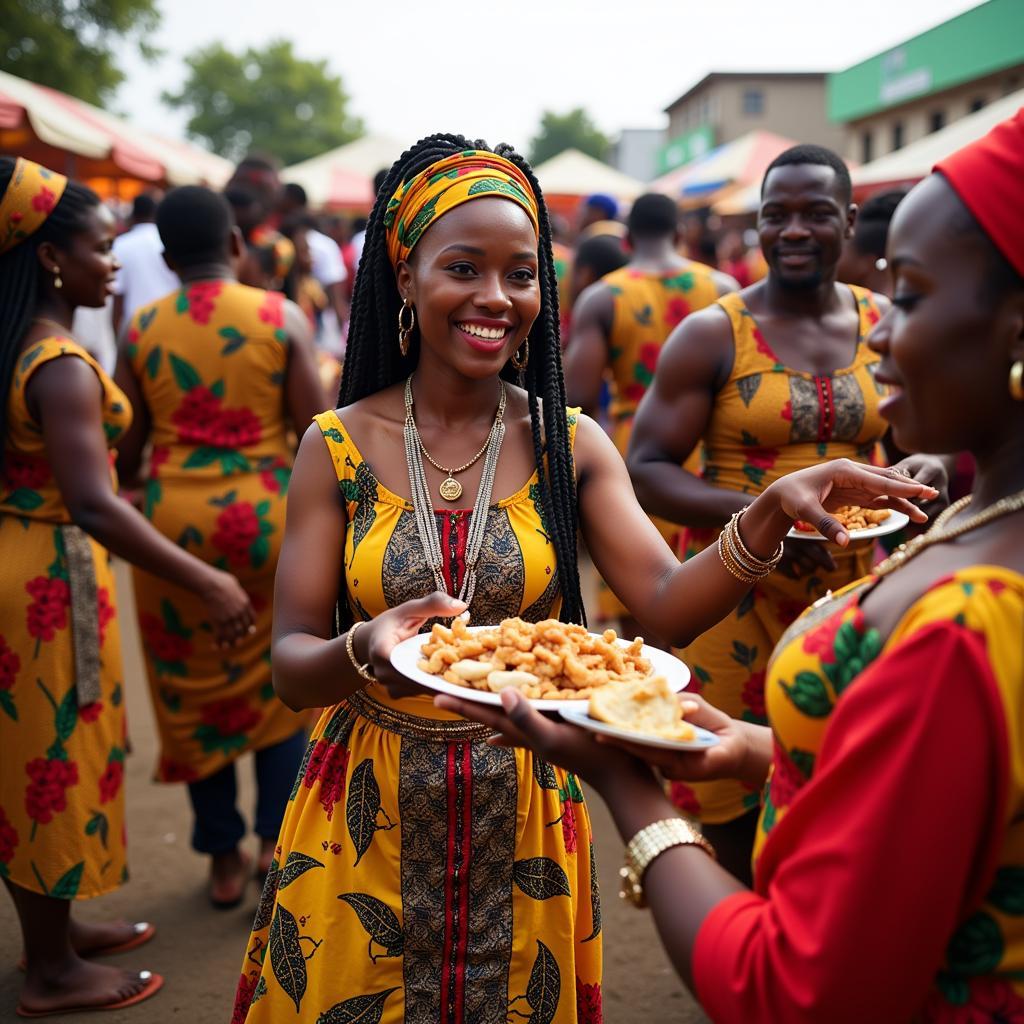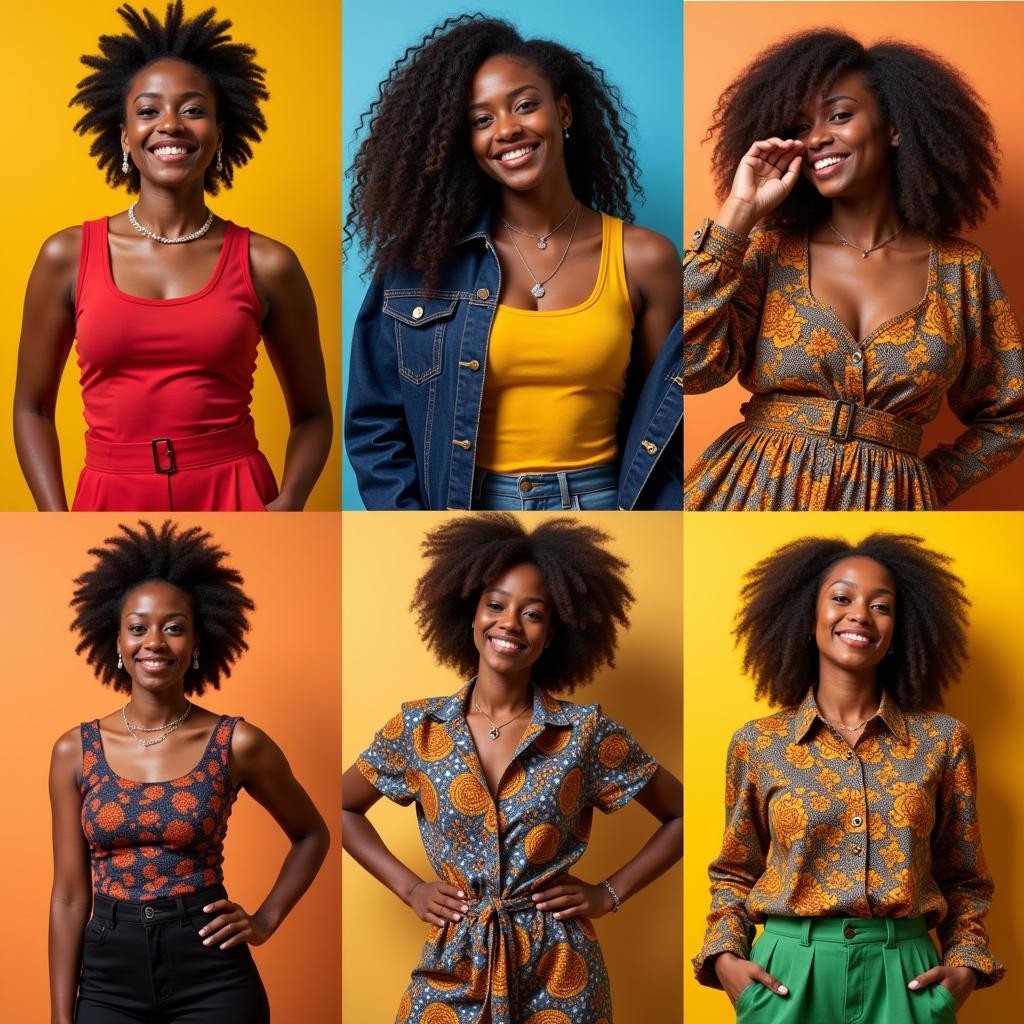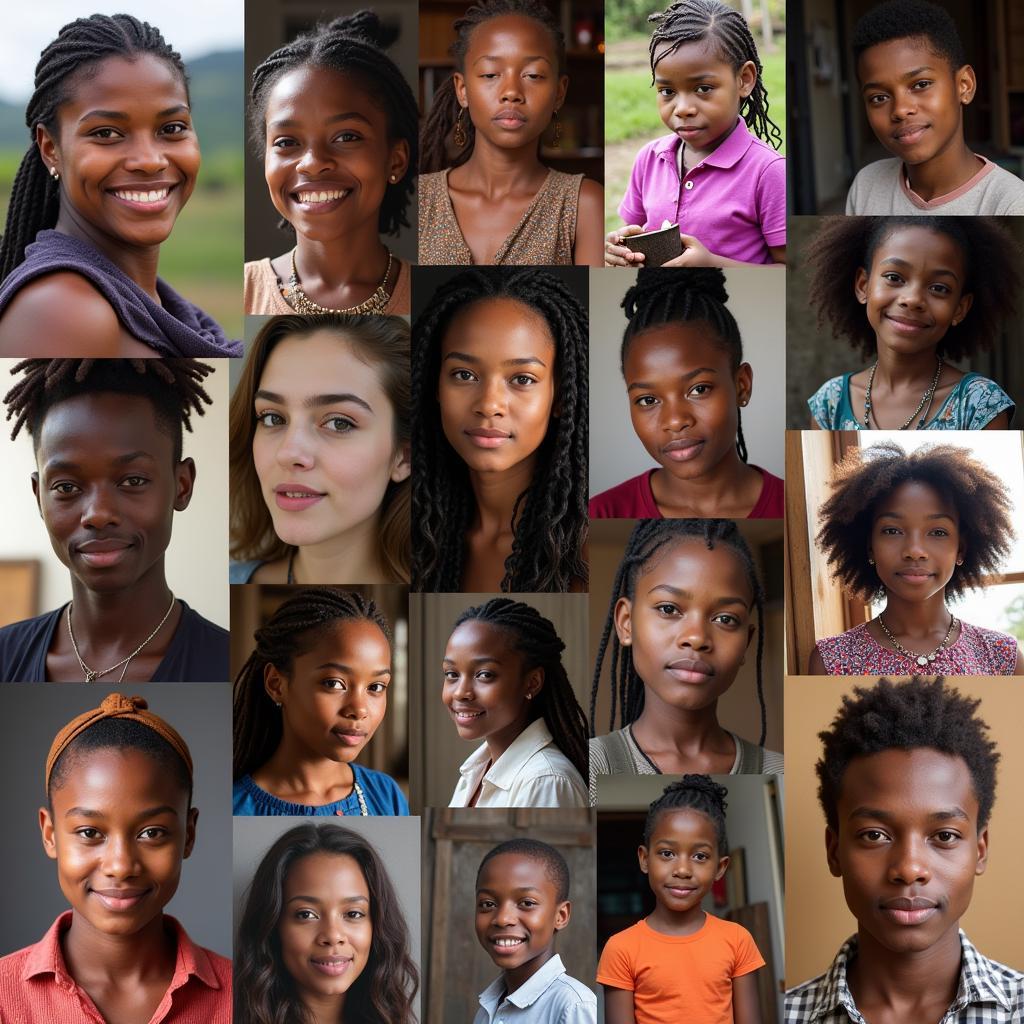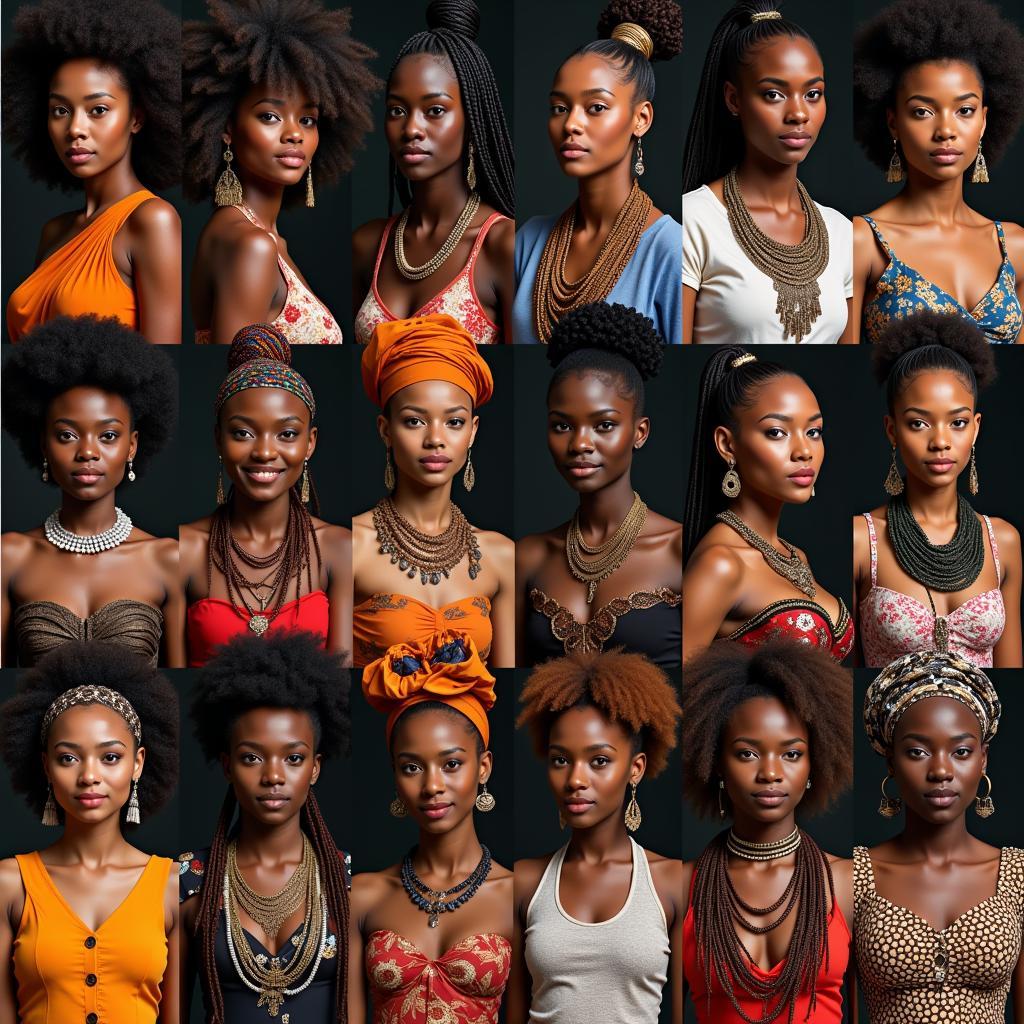Unveiling Fascinating African Clothing Facts
African clothing is more than just fabric; it’s a vibrant tapestry woven with history, culture, and tradition. From the intricate patterns of kente cloth to the flowing elegance of a boubou, each garment tells a story. This article delves into captivating African Clothing Facts, exploring the diverse styles, symbolism, and significance of attire across the African continent. You’ll discover how clothing reflects social status, celebrates heritage, and adapts to the modern world.
The Rich Tapestry of African Clothing: A Cultural Narrative
African clothing facts demonstrate the continent’s incredible diversity. Each region, country, and even tribe boasts unique styles and traditions. North African clothing often features flowing robes and intricate embroidery, reflecting the influence of Islamic and Berber cultures. Think of the djellaba, a long, loose hooded robe, or the kaftan, a beautifully embroidered tunic. Moving south, we encounter an explosion of colors, patterns, and textures. From the bold prints of West African Ankara to the intricate beadwork of Southern African Ndebele attire, the continent offers a dazzling display of creativity and craftsmanship.
For those seeking unique textiles, you might be interested in exploring options for African lace fabric for sale.
Materials and Techniques: From Bark Cloth to Modern Textiles
Traditional African clothing often utilizes natural materials like cotton, bark cloth, and animal hides. Bark cloth, made from the inner bark of certain trees, has a rich history in East Africa, demonstrating resourcefulness and ingenuity. Leatherwork is also prevalent, particularly in Southern and East Africa, with intricate designs adorning clothing and accessories. Today, while these traditional materials are still valued, modern textiles and techniques have also been incorporated, leading to innovative and contemporary designs. These new styles often blend traditional elements with modern influences, creating a dynamic fashion landscape.
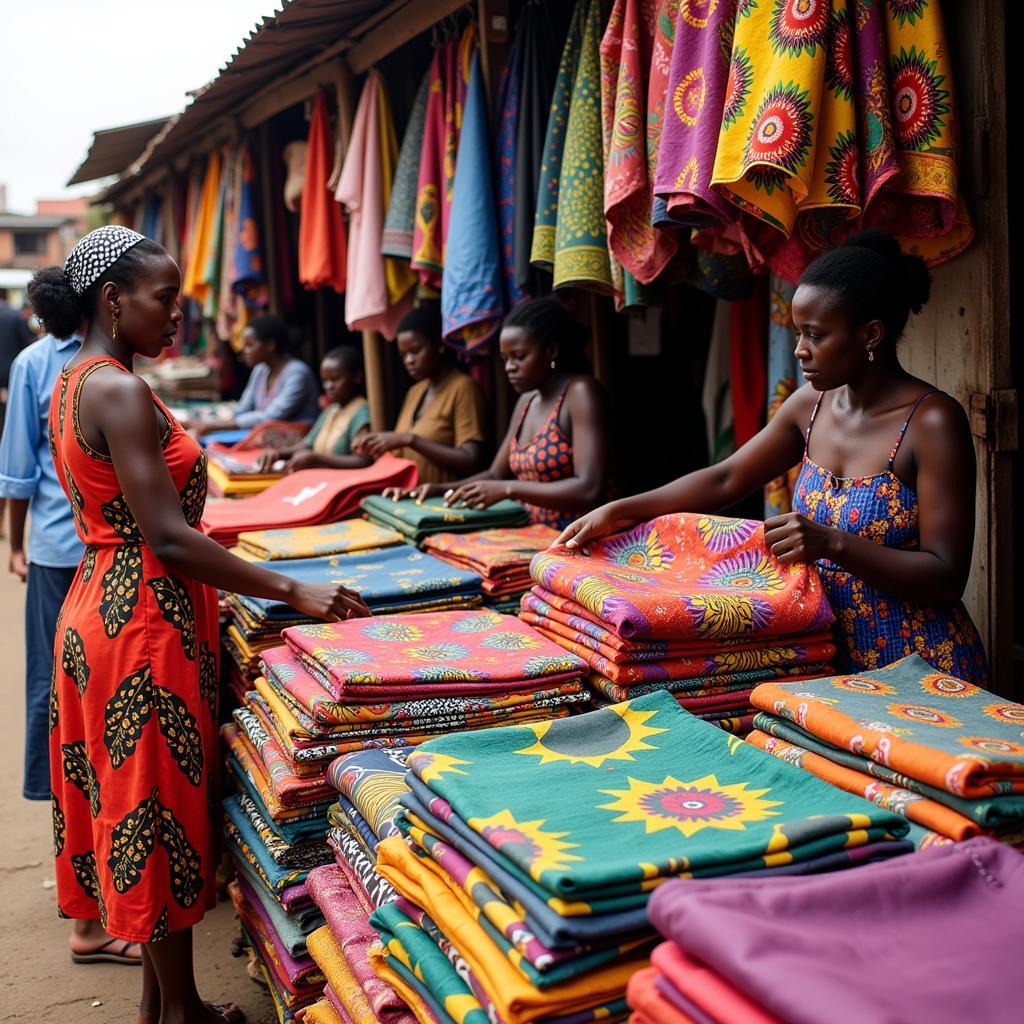 Vibrant West African Ankara Fabrics in a Bustling Market
Vibrant West African Ankara Fabrics in a Bustling Market
Symbolism and Significance: More Than Just Fashion
African clothing facts often reveal deep cultural meanings. Colors, patterns, and embellishments can communicate social status, marital status, age, and even religious beliefs. For example, in some cultures, specific colors are reserved for royalty or religious leaders. Patterns might represent clan affiliations or tell stories of ancestral legends. Even the way a garment is draped or accessorized can convey important messages. Understanding these symbolic elements provides a deeper appreciation for the rich cultural heritage embedded in African attire.
African Clothing in the Modern World: A Global Influence
African fashion is increasingly gaining recognition on the global stage. Designers are drawing inspiration from traditional styles and incorporating them into contemporary collections. This global influence not only celebrates African creativity but also fosters economic opportunities for local artisans and communities. From runways to everyday wardrobes, African clothing is making its mark, showcasing the beauty and diversity of the continent’s sartorial heritage. If you’re looking for African-inspired décor for your home, check out some resources for African inspired home decor.
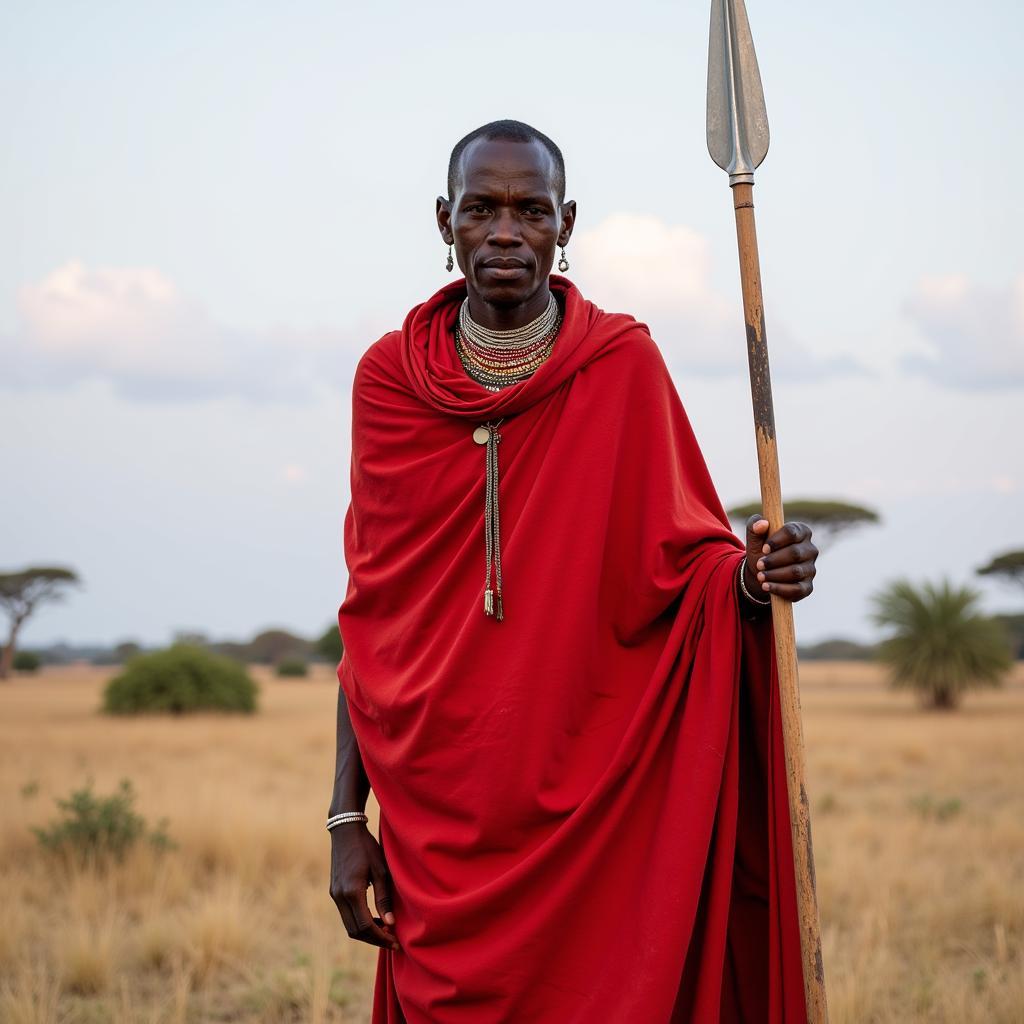 Maasai Warrior in Traditional Red Shuka
Maasai Warrior in Traditional Red Shuka
Ahmed Ibrahim, a renowned textile designer from Ghana, states, “African clothing is not just about fashion; it’s a living art form that continues to evolve and inspire.”
Adapting to Change: Tradition Meets Innovation
While embracing global trends, African clothing also retains its strong connection to tradition. Many designers are finding innovative ways to blend the old with the new, creating unique pieces that honor their heritage while catering to contemporary tastes. This fusion of traditional techniques and modern aesthetics ensures that African clothing remains relevant and vibrant for generations to come. This blend is vital for preserving cultural identity while embracing the dynamism of the fashion world.
What is the Significance of Headwraps in African Culture?
Headwraps hold deep cultural significance in many African communities, representing everything from marital status and social standing to spiritual beliefs and personal style. They are often seen as symbols of respect, dignity, and heritage, and are worn with pride.
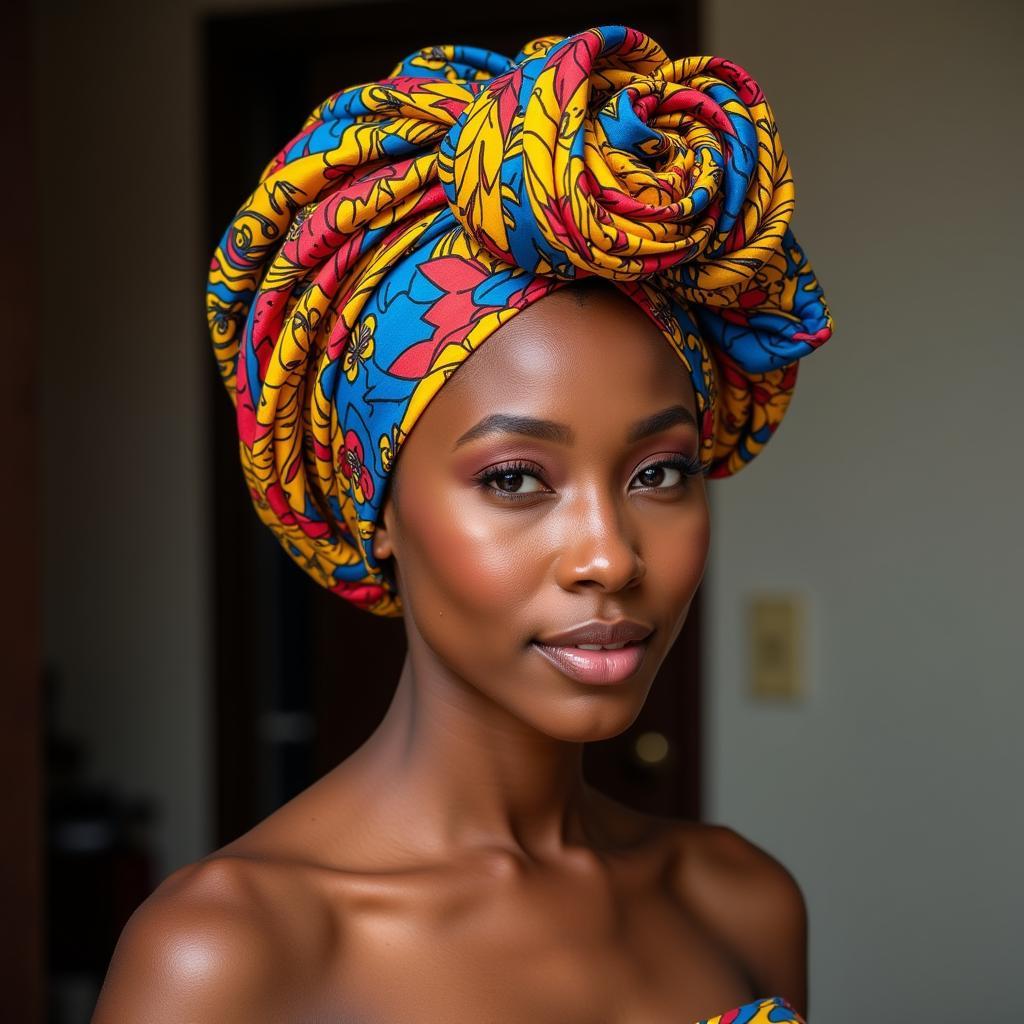 Nigerian Woman in a Colorful Headwrap
Nigerian Woman in a Colorful Headwrap
Conclusion: A Celebration of African Identity
African clothing facts reveal a vibrant and diverse world of textiles, symbolism, and tradition. From ancient techniques to modern interpretations, African clothing continues to evolve while maintaining its deep cultural roots. It’s a testament to the creativity, resilience, and rich heritage of the African people. Explore the beauty of African clothing and discover the stories woven into every thread. For a deeper dive into African culture, consider exploring information about African countries, their capitals, and currencies.
FAQ:
- What are some common materials used in African clothing? Cotton, bark cloth, leather, and various woven fabrics are commonly used.
- What is the significance of colors in African clothing? Colors can symbolize status, age, or spiritual beliefs, varying by culture.
- Where can I find authentic African clothing? You can find authentic pieces at markets, boutiques specializing in African fashion, and increasingly online. Perhaps you might be interested in visiting an African boutique in Bangalore.
- How has African clothing influenced global fashion? African prints, styles, and aesthetics are increasingly incorporated into global fashion trends.
- What is the cultural significance of African headwraps? Headwraps often symbolize respect, dignity, and heritage in many African communities.
- What are some examples of traditional African clothing styles? Examples include the boubou, kente cloth, dashiki, and shuka.
- How is African clothing adapting to modern trends? Designers are blending traditional elements with modern aesthetics to create unique and contemporary pieces.
Aisha Kone, a celebrated fashion historian specializing in West African textiles, remarks, “The history of Africa is woven into the very fabric of its clothing, telling tales of resilience, innovation, and cultural pride.”
Considering the historical and cultural significance of African American artifacts, one might also find it fascinating to explore African American cultural artifact examples.
Need further assistance? Contact us: Phone: +255768904061, Email: kaka.mag@gmail.com or visit us at Mbarali DC Mawindi, Kangaga, Tanzania. Our customer service team is available 24/7.

